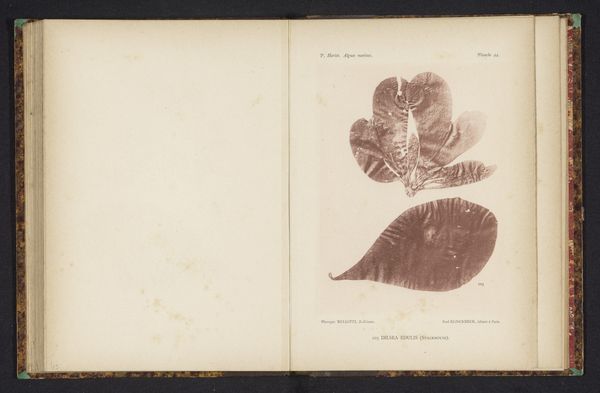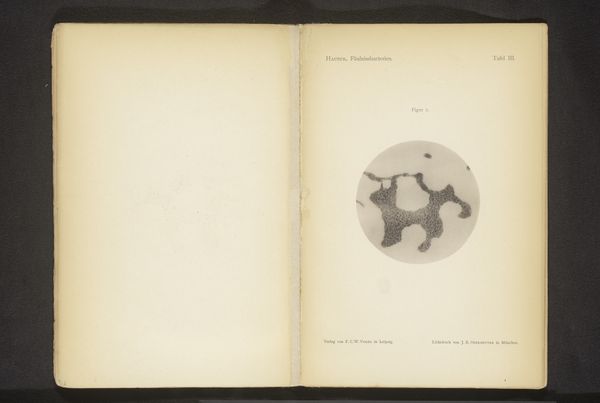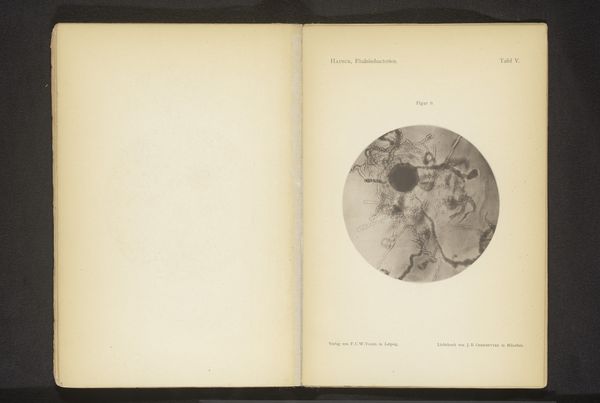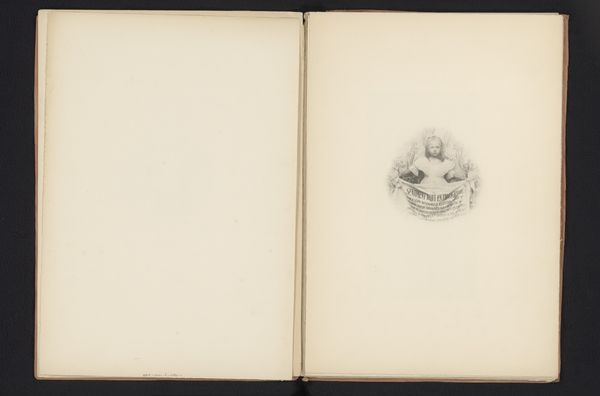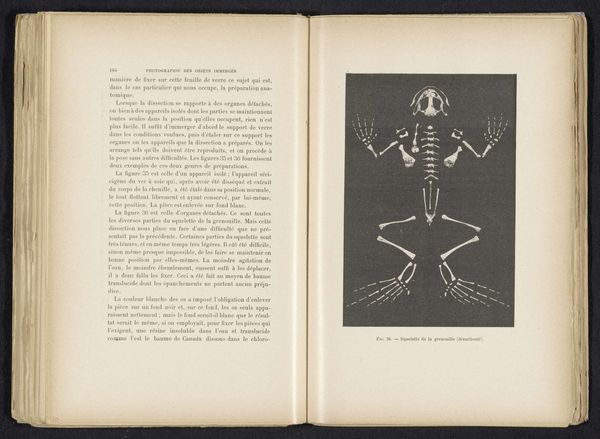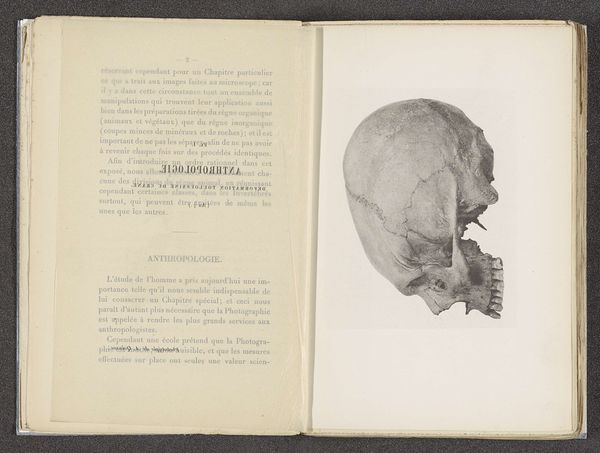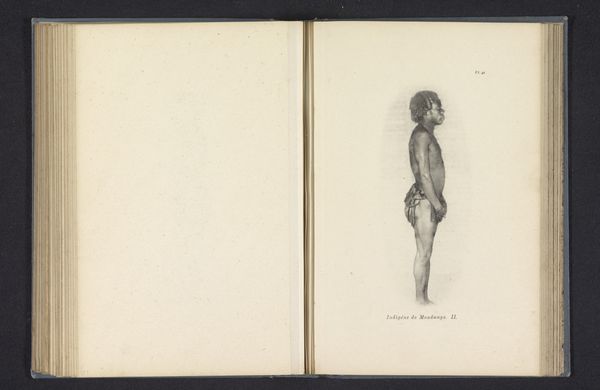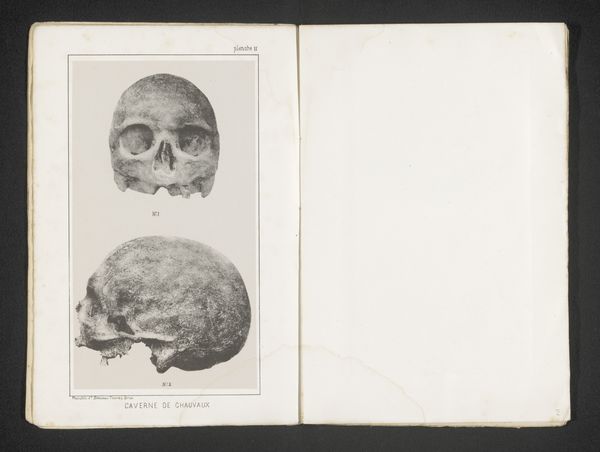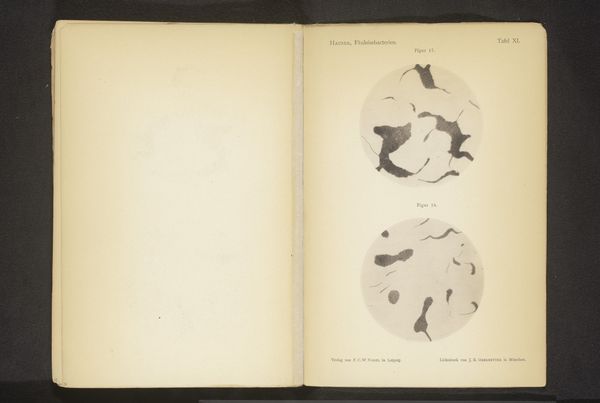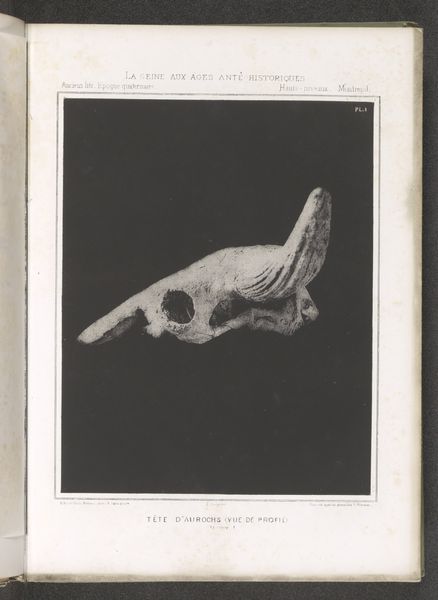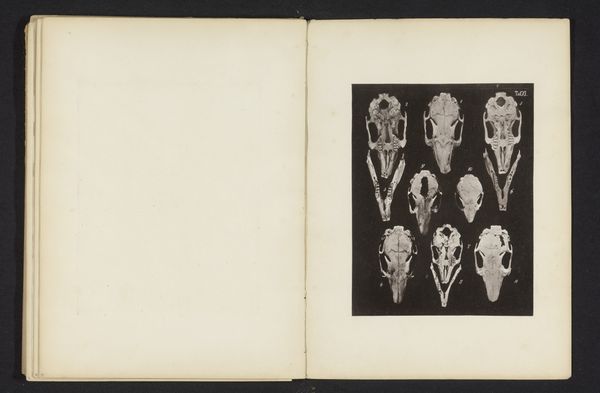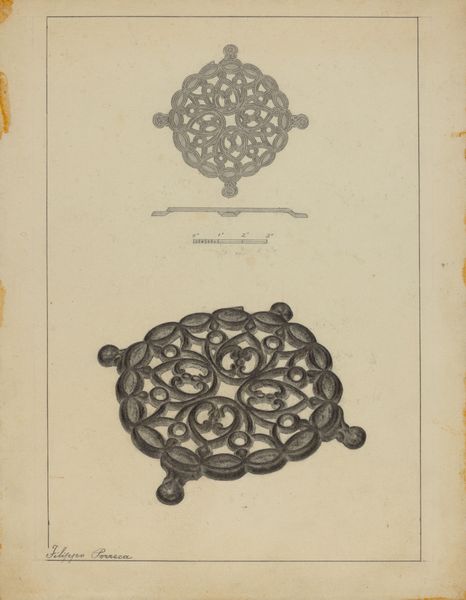
print, photography, gelatin-silver-print
#
still-life
# print
#
photography
#
gelatin-silver-print
#
naturalism
#
realism
Dimensions: height 145 mm, width 114 mm
Copyright: Rijks Museum: Open Domain
Editor: Here we have an intriguing gelatin silver print entitled "Caretta schildpad," made before 1893 by an anonymous photographer. It depicts a turtle displayed on the right-hand page of an open book. The stark presentation makes me wonder – what am I really looking at here? What's your take on this? Curator: This photograph invites us to consider the means of production and consumption, specifically the ways natural specimens were treated and represented. Consider the turtle: removed from its habitat, posed, photographed, and then reproduced as a print within a book. This process transforms a living creature into an object, a commodity to be studied and consumed visually. What does this tell us about the late 19th-century scientific gaze and its impact on the natural world? Editor: So you’re saying the photograph is less about the turtle itself and more about how it's being presented and used? Curator: Exactly! The materials - the gelatin silver print, the paper of the book – and the labor involved in creating them are crucial to understanding the artwork’s meaning. Also, the book format itself, enabling mass distribution, turns knowledge into something that can be bought and sold. What social structures supported this kind of representation? Editor: It’s fascinating to think about it that way, framing the artwork as a product of very specific social and material conditions rather than just a straightforward image. The anonymous authorship further obscures the individual’s labor while highlighting the industrialized processes. Curator: Precisely. This anonymous depiction reveals the systems that allowed the piece to exist and be widely distributed. We need to consider this mode of still life not only as aesthetic admiration, but as consumption, of turning organic life into product, for scientific purposes or something else entirely. Editor: I see, it changes the way I think about the purpose and impact of these images. Curator: Indeed. And that awareness transforms how we understand not just this particular image but the broader history of representing the natural world.
Comments
No comments
Be the first to comment and join the conversation on the ultimate creative platform.
